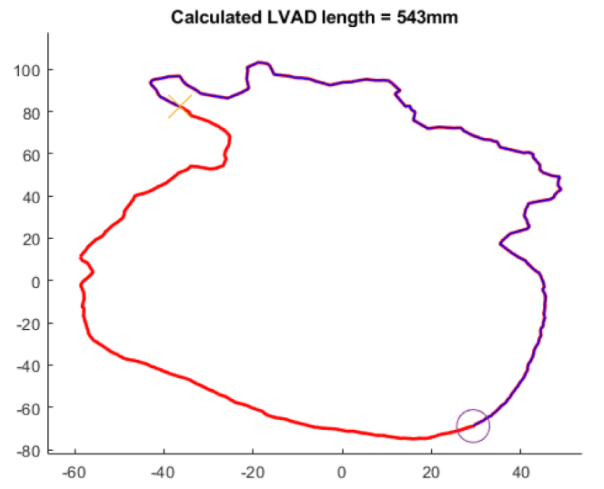Algorithm to improve left ventricular assist device implantation
An image processing algorithm to determine ideal, patient-specific location parameters for LVAD implantation.

Applications
- Medical devices - Left Ventricular Assist Device (LVAD) and other transapical procedures
Key Benefits & Differentiators
- Location parameters are patient-specific
- Removes guesswork in placement of LVADs
- Reduces examination and guesstimation time during surgery
- Uses routine pre-procedural medical imaging
Overview - Algorithm for determining implant location
A Left ventricular assist device (LVAD) is a battery-operated mechanical pump that helps the left ventricle pump blood to the rest of the body. During implantation surgery, the graft that carries the blood from the LVAD pump to the aorta needs to be placed and sized appropriately. Typically, a surgeon determines the placement of the LVAD during surgery, cutting the graft as necessary to install the device. As every patient is different, a surgeon essentially “eyeballs” where to place the device during an operation and trims the graft while taking very few measurements. If the graft length is too long, the graft may kink, causing turbulent blood flow that damages blood cells. If too short, the graft may press on the right ventricle, compressing the right coronary artery and interfering with the expansion and contraction of the right ventricle. Importantly, any imprecise location of and/or mal adjusted angle of graft attachment, and positioning of pump, may result in adverse events.
To address these issues, researchers at the University of Minnesota have developed an image processing algorithm that can assist surgeons in determining where and how the device should be surgically implanted. This algorithm processes routine pre-procedural CT scans to identify specific regions (such as mitral valve, apical dimple, etc.) of the patient’s heart. Using this information, the algorithm determines the most ideal implant placement parameters in terms of distance and direction from the apical dimple, and the optimal length of the graft. Such patient-specific recommendations provided prior to the surgery could help improve clinical success rate associated with LVAD implantation by reducing device-related adverse events. This algorithm could potentially work for other devices, including mitral valve replacements an chordal repairs.
Phase of Development
TRL: 5Alpha Version. Image processing algorithm and workflow is tested in a simulated environment. Clinical data is being gathered to refine the algorithm.
Desired Partnerships
This technology is now available for:- License
- Sponsored research
- Co-development
Please contact our office to share your business’ needs and learn more.
Researchers
- Paul Iaizzo, PhD, Professor, Department of Surgery
- Andrew Shaffer, PhD, Professor, Department of Surgery